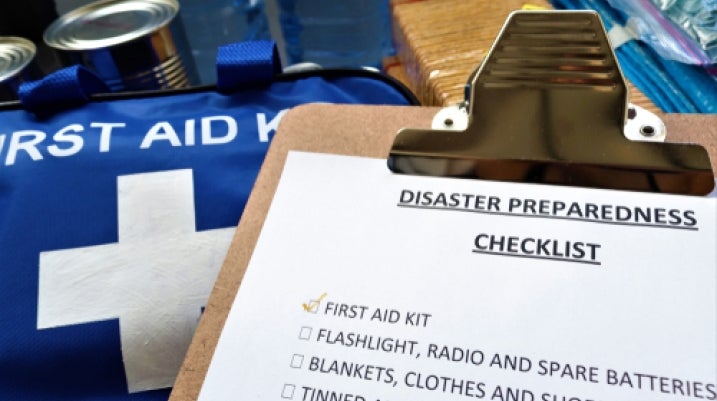Hurricane Matthew Checklist: How to Prepare for Landfall

As Hurricane Matthew has made its way though the Caribbean, leaving a devastated Haiti in its wake, its poised to brush along Florida's Atlantic coast as the second major hurricane to hit the state this year. The category-4 storm has the potential to cause devastating damage as it strikes the state on Oct. 6 and 7.
Schools across eastern Florida are closed in anticipation of Hurricane Matthew. Mandatory evacuations are already underway for beachside residents in Brevard County, and more could be issued as the hurricane approaches Florida.
Hurricane Matthew has the potential to devastate eastern Florida with projected winds of up to 110 - 130 mph, according to The Weather Channel, so it is absolutely essential for residents in hurricane-watch areas to know how to protect their family, and home and property, from damage if Matthew indeed makes landfall.
"Having a plan in place could mean the difference between life and death," Gov. Rick Scott told reporters during a news conference held at 9 a.m. on Wednesday, Oct. 5 in Tallahassee.
If the storm hasn't reached you yet, here are the ways residents in hurricane-warning areas can prepare for landfall.
Stock Up on Food and Water
Families in the path of Hurricane Matthew absolutely should visit their grocery store and stock up on canned goods and non-perishables such as beans, chili, soups, crackers, cookies, and peanut butter. Have enough food for each member of your family for at least three days, according to the Department of Homeland Security’s guidelines.
Bottled water is also a must. DHS recommends that you should stock at least one gallon per person per three days for cooking, drinking, and personal hygiene.
Locate Your Disaster Supply Kit
The importance of a stocked first-aid kit with all the necessary medical supplies cannot be overstated. Be sure to keep your emergency kit close at hand, along with a flashlight, radio, and extra batteries in the case of a power outage or quick evacuation, advises the DHS.
As Hurricane Matthew Leaves, Your Safety Depends on You NOT Doing Certain Things
Make Sure You Have Gas in the Tank
The last thing you want to see is your car’s empty gas tank, if you need to quickly evacuate your home. Fill up at your local gas station so that your car has a full tank of gas in the case of an emergency. You should also make sure your car’s tires are in proper working condition, as a blown tire could also cause a snag in evacuation plans.
Know Your Evacuation Route
If you received the alert to evacuate, would you know how to get to your posted evacuation route? Be sure to review where your evacuation route is and the quickest way to get there from your home, in the case of an emergency. You can find your evacuation zone and route on the Florida Division of Emergency Management website. Everyone in your family should understand the evacuation plan and be ready to leave quickly.
Prepare Your Home For Heavy Rain and Winds
Secure any items in your yard that could be picked up by the wind, such as lawn furniture, to prevent them from potentially careening into your or your neighbor’s home.
Clean gutters make a major difference in ensuring that your home does not get flooded from the heavy rainfall. Take the time to clear out your gutters and downspouts of leaves and debris, advises Consumer Affairs.
Lastly, make sure that all of your home’s windows are covered, as flying glass from broken windows can seriously injure you and your family. Boarding up windows with plywood, or installing permanent storm shutters, are two options for safely covering your windows, according to the DHS.
Take Photos of Your Property
As we mentioned when Hurricane Hermine loomed over Florida, if your home sustains damage from Hurricane Matthew, you will need all of the proof when filing your claim with the insurance company.
Take several wide-angle photos of your property, leaving no major details out of the picture, to show the condition of the property before the hurricane hit. This includes the interior and exterior of your home, your garage, and any other buildings or parked vehicles on your property.
After the Storm
Sometimes, despite your due diligence in protecting your home and paying your premiums month after month, the insurance company will still fight your claim. Or they might outright deny it. This frustrating and often cruel treatment doesn’t have to stand.
Instead, consider looking into a knowledgeable insurance dispute attorney. Our hurricane insurance dispute page offers information on what these attorneys can do for you, and also shows you what your insurance company should be covering. If you’re already ready to file a claim, call us at 833-366-7592 or fill out our free, no-risk case evaluation.
Injured? Getting the compensation you deserve starts here.

Injured?
Not sure what to do next?
We'll guide you through everything you need to know.